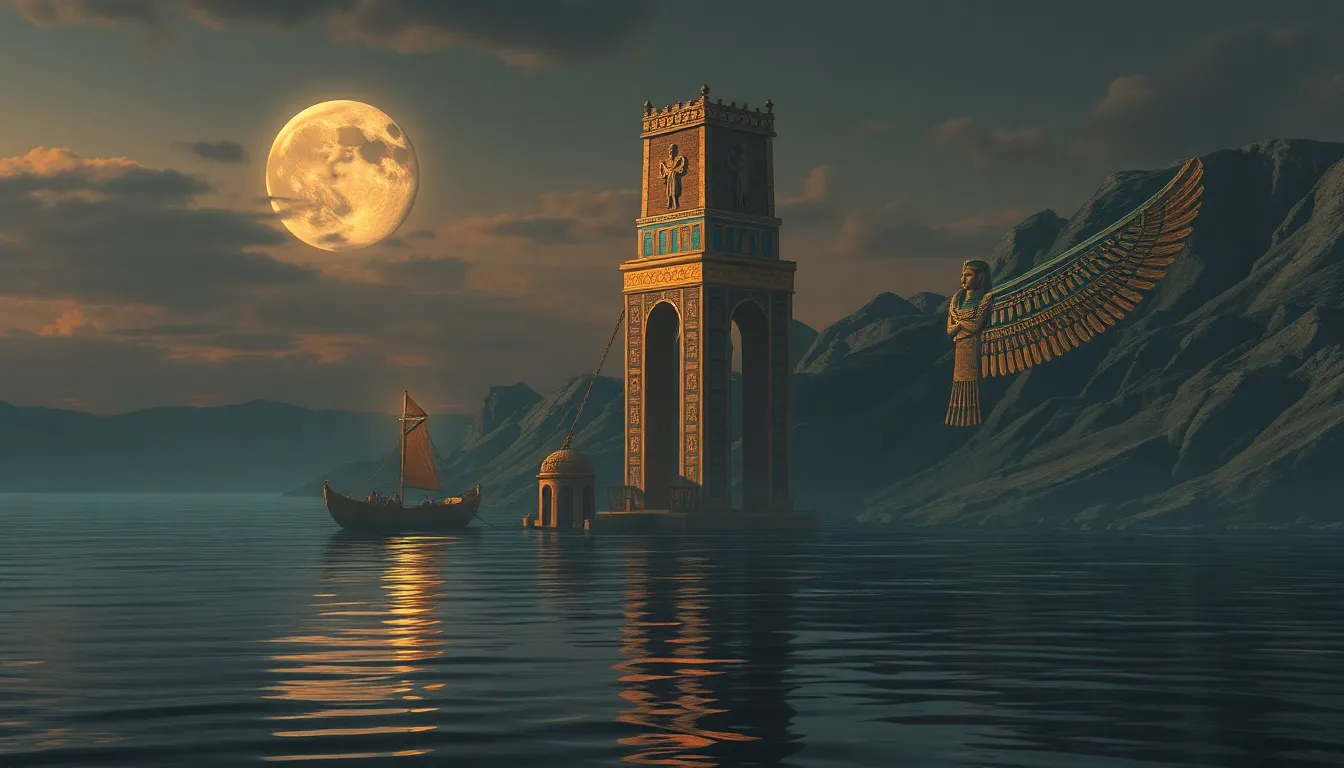The Connection Between the Nile and Egyptian Art
I. Introduction
The Nile River, often referred to as the lifeblood of ancient Egypt, has played a pivotal role in shaping the civilization’s culture, economy, and spirituality. This majestic river has not only provided sustenance and agricultural wealth but has also profoundly influenced the artistic expressions of the ancient Egyptians. The purpose of this article is to explore the intricate relationship between the Nile and Egyptian art, highlighting how this vital waterway inspired creativity and served as a central theme in various artistic forms.
II. The Nile: Lifeblood of Ancient Egypt
The Nile River, stretching over 4,000 miles, is the longest river in the world and flows through eleven countries, including Uganda, Sudan, and Egypt. Its geographic and environmental significance cannot be overstated; the river’s annual flooding deposited nutrient-rich silt along its banks, creating fertile grounds ideal for agriculture. This phenomenon enabled the ancient Egyptians to cultivate crops such as wheat, barley, and flax, which were fundamental to their economy.
Moreover, the Nile facilitated trade and transportation, connecting different regions of Egypt and promoting economic growth. The river supported a flourishing society that relied on its resources for food, commerce, and communication. Consequently, the Nile became a central theme in Egyptian culture and was often depicted in their art as a source of life and prosperity.
III. Themes of Nature in Egyptian Art
Nature played a significant role in Egyptian art, with the Nile prominently featured in various forms of artistic expression, including paintings, sculptures, and reliefs. Egyptian artists often depicted the river and its surrounding landscapes, showcasing the vibrant life that thrived along its banks.
- Representation of the Nile: Artistic representations of the Nile often included scenes of fishermen, boaters, and animals native to the river, such as crocodiles and hippopotamuses.
- Symbolism: The Nile symbolized fertility, abundance, and life. Its cyclical flooding was seen as a divine blessing, and this connection to the gods was reflected in the motifs and iconography used in Egyptian art.
IV. Rituals and Religion: The Nile’s Influence
The Nile was not only a physical entity but also a significant part of Egyptian mythology and religious practices. The ancient Egyptians revered the river, associating it with various deities and mythological narratives.
- Deities: The Nile was personified by the god Hapi, who was depicted as a bearded man with a potbelly, symbolizing abundance and fertility. He was often shown with plants, fish, and other symbols of the river’s bounty.
- Artistic Depictions: Artistic representations of Hapi and other deities associated with the Nile were common in temples and tombs, emphasizing the river’s central role in their spirituality.
V. The Nile as a Source of Inspiration
The seasonal changes of the Nile, marked by its annual flooding, provided artists with a continuous source of inspiration. The transformations of the landscape throughout the year were captured in various artistic forms.
- Seasonal Changes: Artists depicted the lush greenery that emerged after the floods, contrasting with the dry, arid landscape that prevailed during the summer months.
- Daily Life: The Nile also influenced the depiction of daily life and leisure activities. Scenes of fishing, boating, and celebrations along the riverbanks are common in ancient murals, reflecting the river’s importance to social activities.
VI. Artistic Techniques and Materials Related to the Nile
The ancient Egyptians utilized local materials sourced from the Nile and its surroundings in their artistic creations. This relationship between the river and the materials available influenced the techniques used by artists.
- Local Materials: The availability of papyrus, a plant that grew abundantly along the Nile, was crucial for the creation of scrolls and artworks. Additionally, the river provided clay for pottery and sculpture.
- Techniques: The techniques developed by Egyptian artists were often influenced by the natural resources the Nile provided, leading to a unique style that is instantly recognizable.
VII. The Legacy of the Nile in Modern Egyptian Art
The themes and inspirations derived from the Nile continue to resonate in contemporary Egyptian art. Modern artists draw upon the legacy of their ancient predecessors while infusing their works with contemporary perspectives.
- Continuation of Themes: Many modern artists explore themes of nature, mythology, and daily life, reflecting the enduring influence of the Nile in their work.
- Cultural Identity: The Nile remains a symbol of Egyptian identity and culture, with artists using it as a canvas to express their thoughts on heritage and modernity.
VIII. Conclusion
In summary, the connection between the Nile and Egyptian art is profound and multifaceted, encompassing themes of nature, spirituality, and daily life. The river’s significance as a source of sustenance and inspiration is reflected in the artistic expressions of ancient Egypt, which continue to resonate in modern interpretations. Understanding this relationship enhances our appreciation of Egyptian heritage and the cultural legacy of one of history’s most remarkable civilizations.




